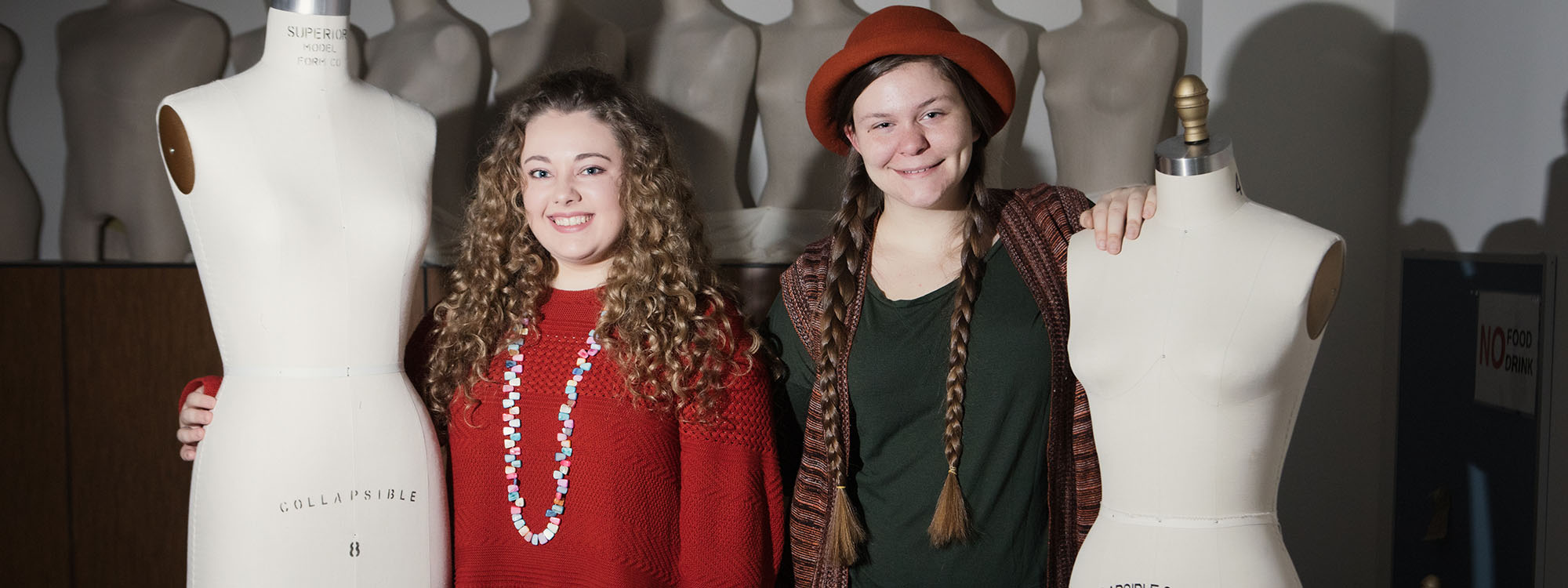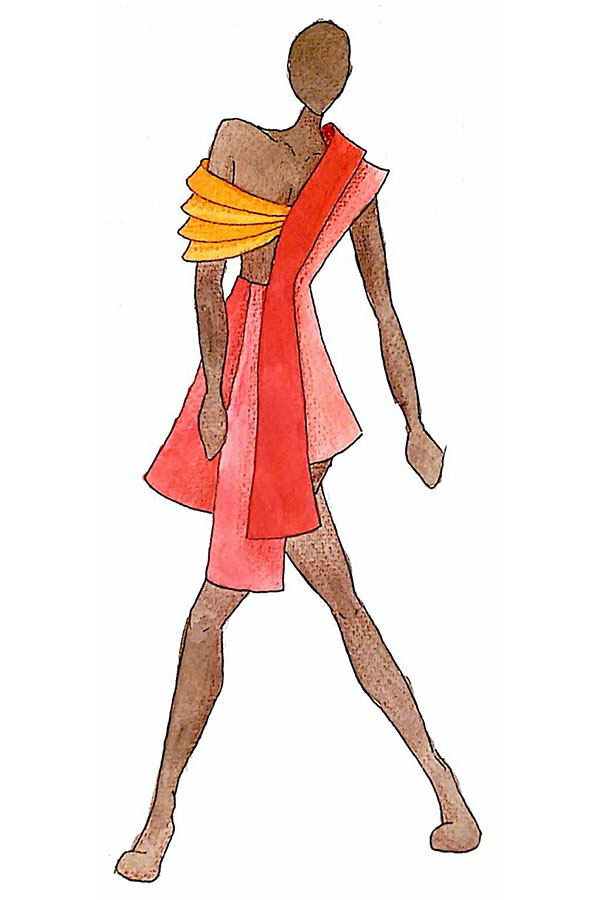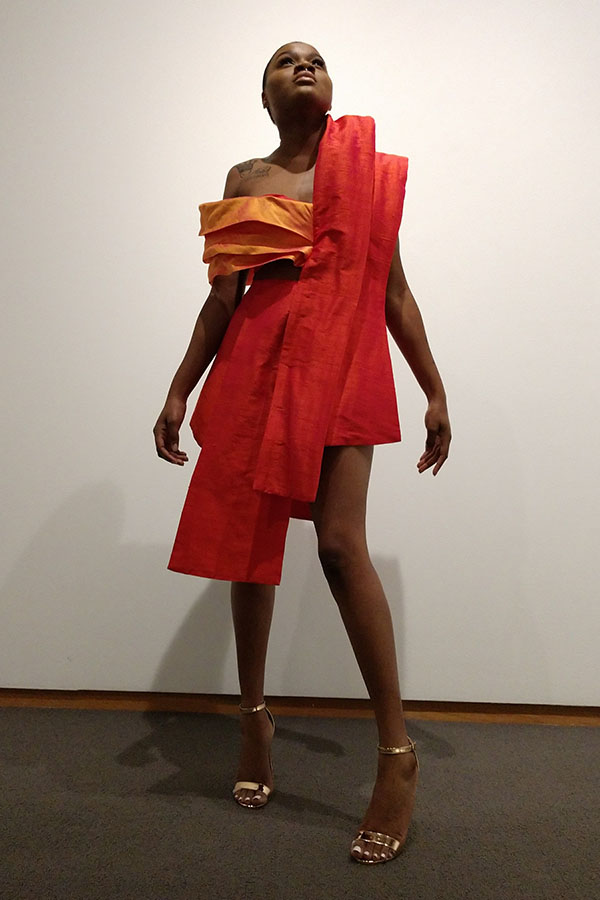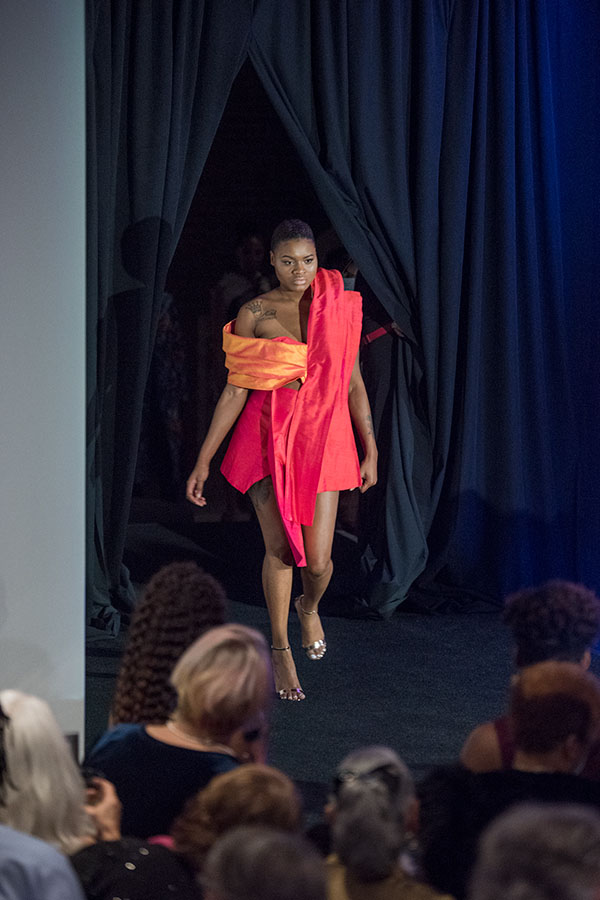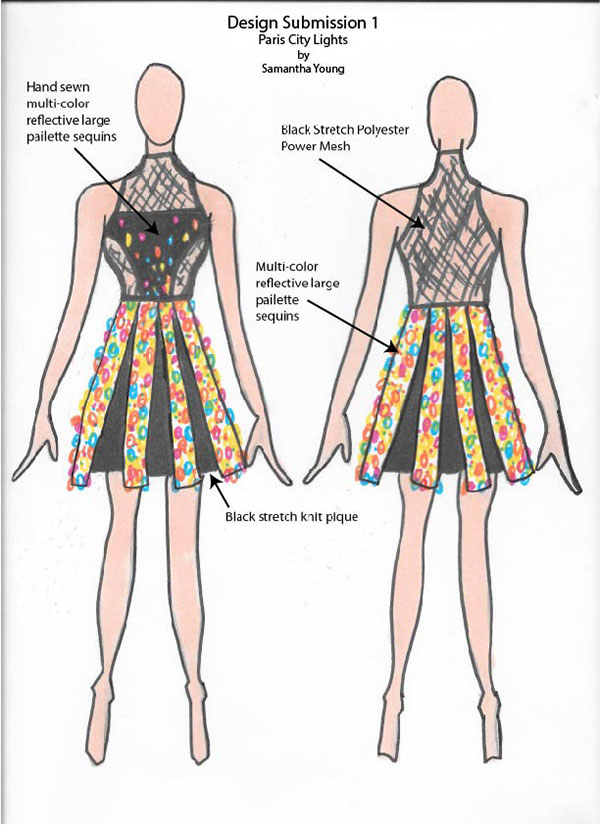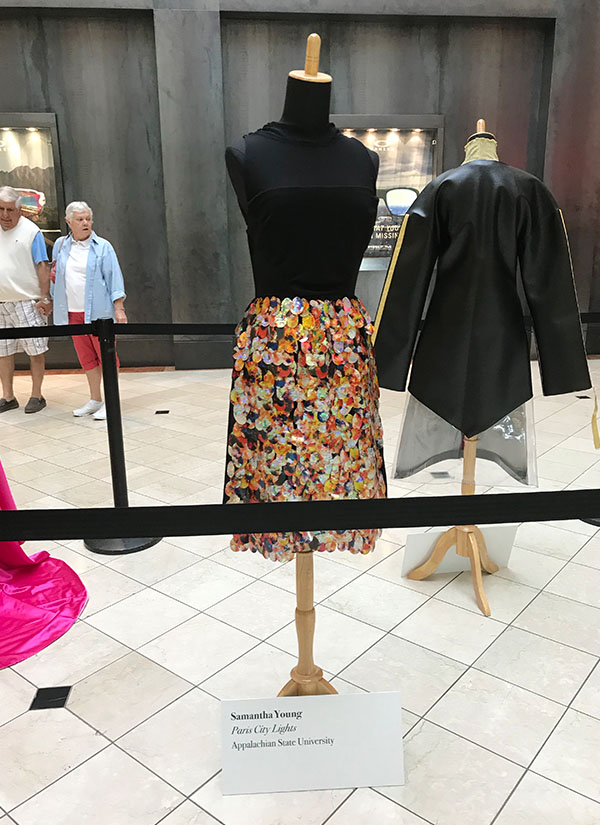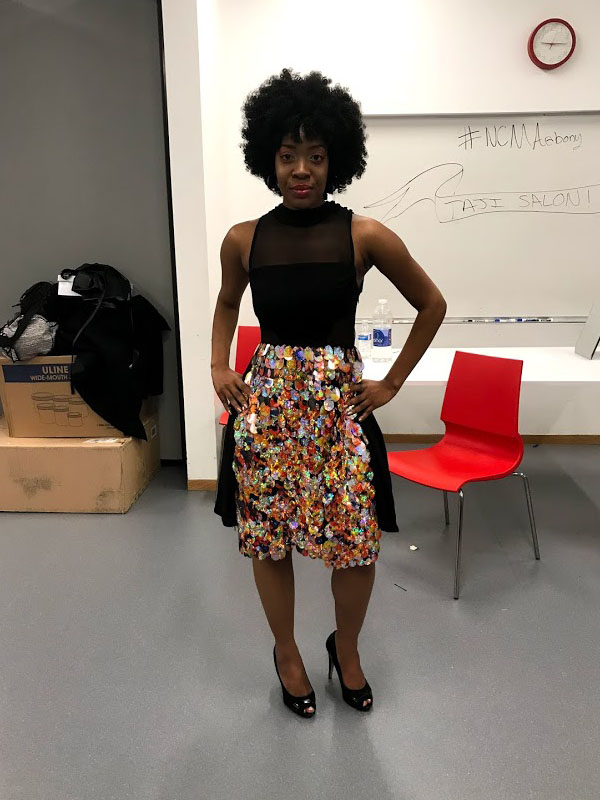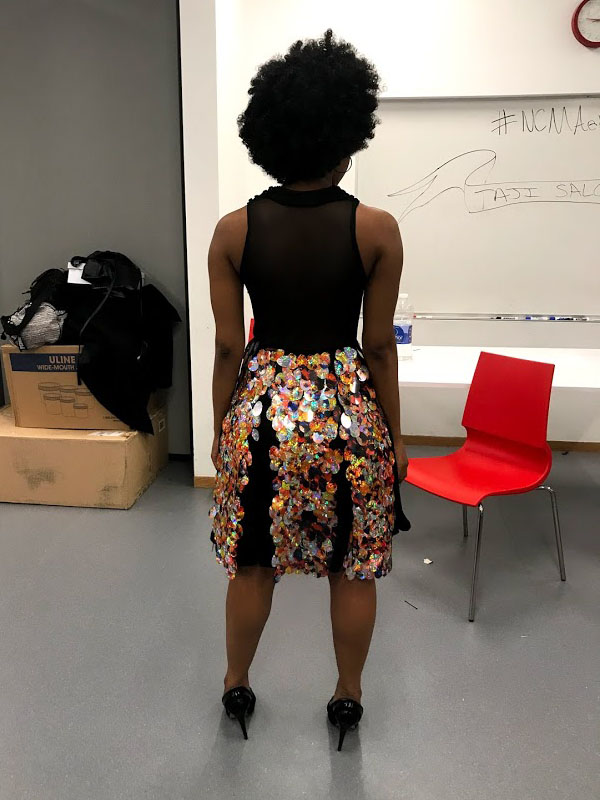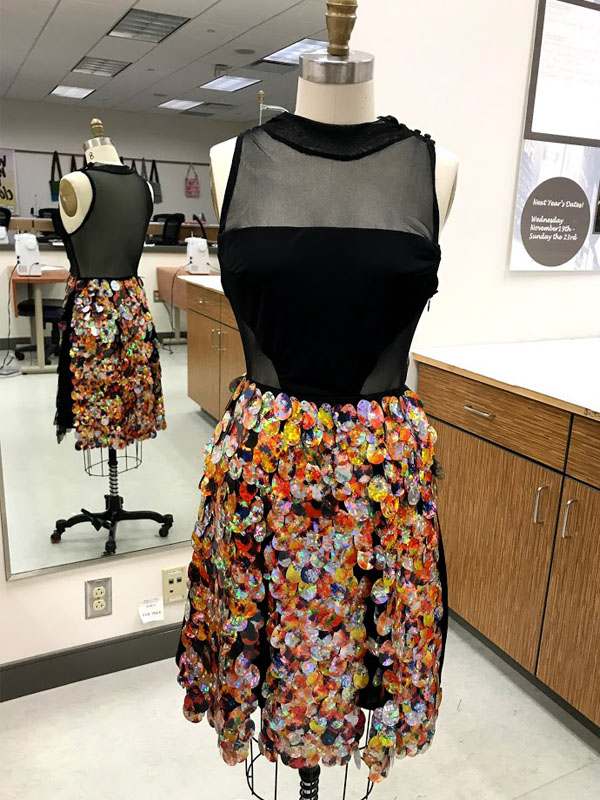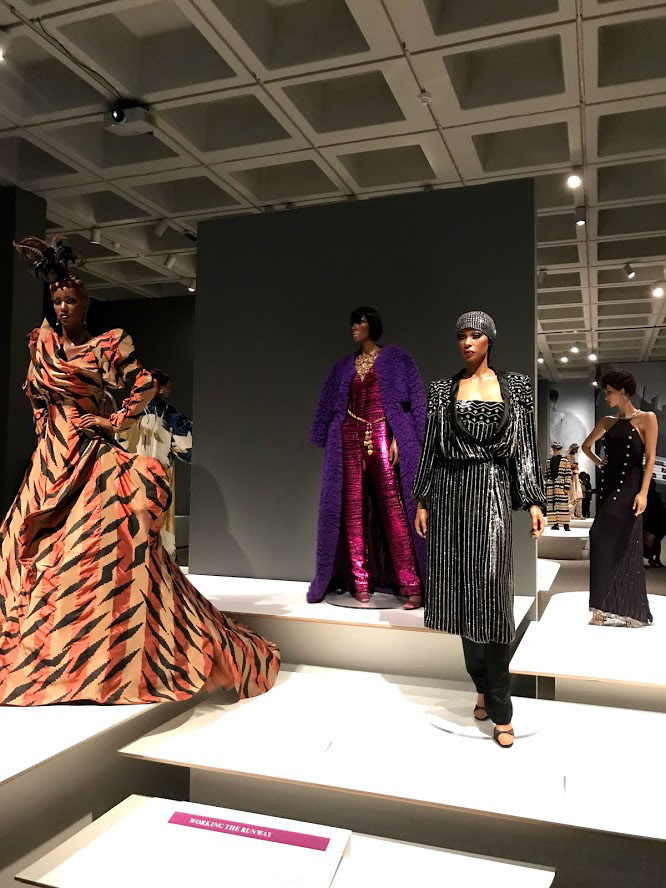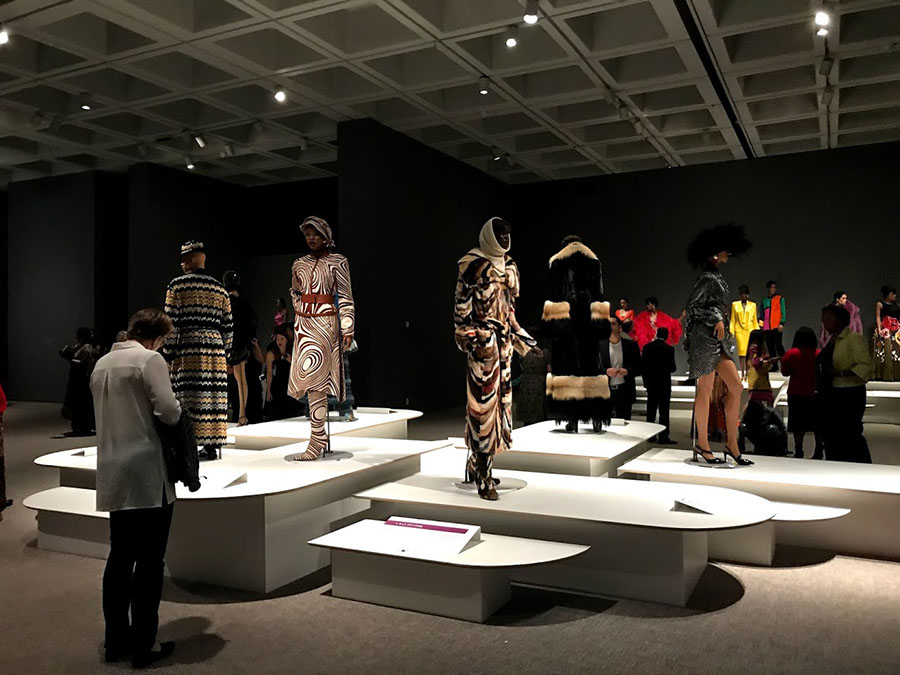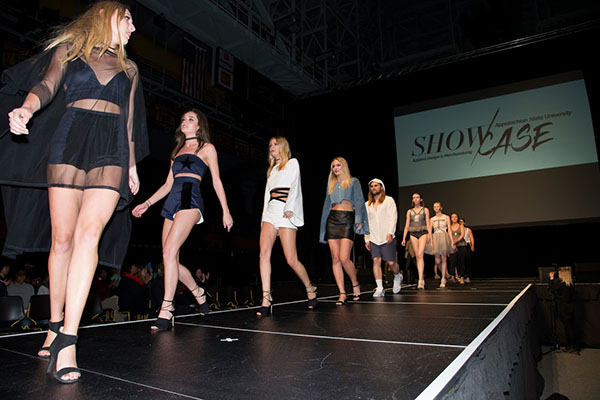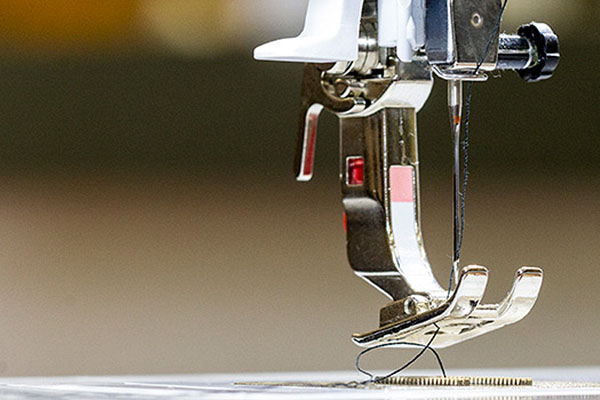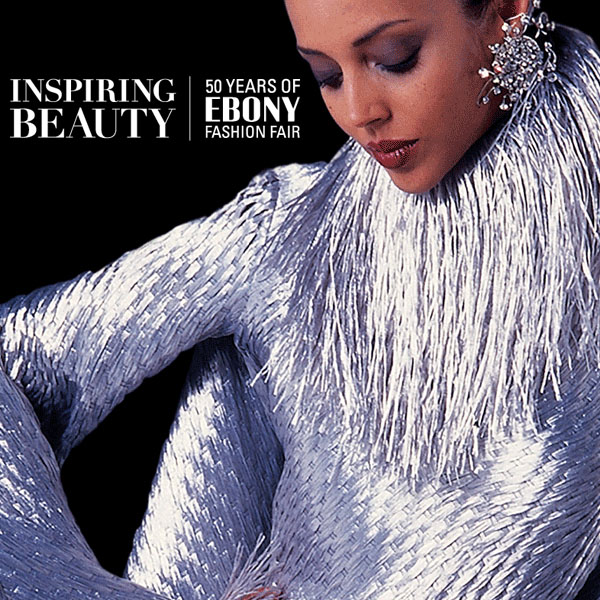BOONE, N.C.—You won’t find “Red Rocks at Sunset” and “Paris City Lights” listed on Amazon Books or as new Netflix series. They are the names of fashion-forward designs that won two Appalachian State University apparel design and merchandising students spots in the opening runway show for an exhibit at the North Carolina Museum of Art (NCMA) that celebrates the clothes, makeup and models of the Ebony Fashion Fair.
For 50 years, the fair has featured African-American models on the runway in haute couture. The NCMA exhibit, “Inspiring Beauty: 50 Years of Ebony Fashion Fair,” is open in Raleigh until Jan. 21.
Sarah Bischoff, a senior from Cary, won second runner-up out of a starting field of 35 student designers from North Carolina universities competing in Project NCMA: Behind the Seams.
She said her design, “Red Rocks at Sunset,” was a couture piece she created with techniques she learned while on an Appalachian study abroad in Paris last spring. The fabric she chose for the modern dress is a color-shifting dupioni silk; the faux pleating is sculpted with boning.
“It was sculptural and strange, colorful and different. It pushed me out of my comfort zone construction-wise. I thought it would surprise,” Bischoff said.
Harriet Hoover, NCMA’s coordinator of studio, teen and college programs, said Bischoff’s design “embodies the spirit of the Ebony Fashion Fair with its dramatic architectural silhouette, meticulous craft, celebration of the body and exquisite material choice.”
Samantha Young, a junior from Hickory, also won a place in the runway fashion show that opened the Ebony exhibit. Young said she is usually more drawn to designing ready-to-wear pieces, hoping to create “clothes women wear every day that make them feel empowered and important.”
For the show, she said she collaborated with her professors, who helped her develop a more innovative art piece. The result was “Paris City Lights,” a knee-length cocktail dress with see-through mesh, matte jersey and panels of large paillette sequins. “Something people wouldn’t wear every day. It was more out there,” she said.
“Paris City Lights,” Samantha Young’s entry to the opening runway show for the museum exhibit, is constructed of matte jersey, see-through mesh and paillette sequins. Photos submitted
Young did not place, but the chair of Appalachian’s Department of Applied Design, Brian Davies, said he expected “next year she’ll bring home some hardware of her own.” Hoover said, “The jury loved Ms. Young’s material choices and the ways in which movement activates her design.”
For the competition, students were encouraged to submit work that “is experimental and inventive in concept, construction, or materials.” The invitation to compete read: “This runway show is an opportunity for designers and artists to explore concepts such as the power of color, body attitude/size and innovative fashion.”
Bischoff and Young submitted sketches early in the fall semester and, once selected, executed their designs. They were allowed only two fittings with the models. “We gave our ideal measurements,” Young said. “But I’d never fitted a model before, and at first the dress was way too large.”
Bischoff said, “It was very stressful — I had to get what I had on paper onto a person who wasn’t what I envisioned. At this show, these models had personality and wanted to express it. In France, models were told what to do and did it.”
While working with the Ebony models, Bischoff said, “We communicated as people. Ebony is about personality — the models are not a stick, not an object, they were about really expressing yourself. They had personality, a signature walk; they wanted to shake their hips.”
Fitting behavior for a show that, as defined on the museum’s website, “explores the 50-year history of the Ebony Fashion Fair (1958–2009), a traveling charity fashion show that redefined the concepts of beauty, style and empowerment for African Americans. The fashion event provided transformative images of African Americans as beautiful and successful. Far more than a display of fabulous clothes, the show offered black women a vision of what they could wear and, ultimately, who they could be.”
Compete to learn
Dr. Anthony Wilson, assistant professor in the Department of Applied Design, encouraged a number of his students to enter the competition. “I think it’s important for the students to compete,” he said. “They gain experience. Having their work judged, they get feedback and learn to translate that in a positive way to their work. We also gain some exposure for our program, to let people see what good work our students are doing here.”
Bischoff said competing outside of school was helpful in mastering time management. “If you have a job or a commission, you have to perform,” she said. “How are you going to organize yourself to realistically meet the deadlines?”
Young agreed, saying the exercise was excellent practice for the program’s capstone event, “Showcase,” which will be held in Appalachian’s Holmes Convocation Center Saturday, April 28. Each April, the program hosts a fashion showcase featuring student and faculty creations. The student collections are judged by a panel of industry experts.
Hoover said projects like the museum’s competition “help designers and artists focus their efforts and showcase their best work to new audiences. It is important for designers to take risks, be vulnerable and seek opportunities to push their creative process.”
Why apparel design? Why Appalachian?
Davies said that in his department, “We are all united around making lives better through products … supporting people through ideas about space, clothing, interior design … that’s our collective endeavor. It’s our departmental mission, but it is also part of the ethos of the university.”
Relatively new to the campus — he joined the faculty in 2016 — Davies said he is “impressed with how relational the campus is, how committed the faculty are. ADM (apparel design and merchandising) only recently migrated from the Reich College of Education to the College of Fine and Applied Arts, and I find the heritage of teaching still a core commitment from all our faculty.”
Bischoff said she was drawn to the program because it is hands-on, starting with a first-year construction class. “I emailed my way into that class. I said, ‘Put me in that classroom. I want to get started.’ I didn’t want to sit down. I wanted to get into it, to fill my portfolio. I was ready to go.”
Young said she never intended to come to Appalachian. Many of her family members had attended Appalachian, and she wanted to take a different path. But she heard about the design program and was sold. “Someday, I’d like to design for a company and ultimately have my own label,” she said, “but that's way down the road.”
About the College of Fine and Applied Arts
Appalachian State University’s College of Fine and Applied Arts is a dynamic and innovative group of seven academic departments, bringing together a variety of perspectives, experiences and real-world education to provide unique opportunities for student success. The college has more than 3,500 undergraduate and graduate majors. Its departments are Applied Design, Art, Communication, Military Science and Leadership, Sustainable Development, Sustainable Technology and the Built Environment, and Theatre and Dance. Learn more at https://cfaa.appstate.edu.
About Appalachian State University
As a premier public institution, Appalachian State University prepares students to lead purposeful lives. App State is one of 17 campuses in the University of North Carolina System, with a national reputation for innovative teaching and opening access to a high-quality, cost-effective education. The university enrolls more than 21,000 students, has a low student-to-faculty ratio and offers more than 150 undergraduate and 80 graduate majors at its Boone and Hickory campuses and through App State Online. Learn more at https://www.appstate.edu.
What do you think?
Share your feedback on this story.
